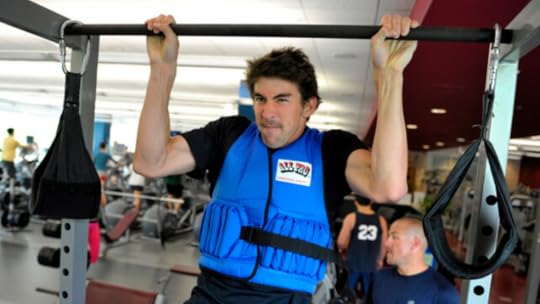The Ultimate Guide to Building an Effective Sales Process

 Why process is paramount in selling.
Why process is paramount in selling.
 How effective processes are a means to enhance selling skills.
How effective processes are a means to enhance selling skills.
 How to identify and fix the bottlenecks in your sales processes.
How to identify and fix the bottlenecks in your sales processes.
 Why most sales systems are like diets and just as effective.
Why most sales systems are like diets and just as effective.
 6 simple steps to control your selling and compress buying cycles.
6 simple steps to control your selling and compress buying cycles.
Why Process is Paramount
This is one of the classic debates about sales and selling. It is very similar to the ‘nature vs. nurture’ debates that young adults without kids and too much time on their hands indulge in. (Anyone with kids quickly learns the answer to this…) The answer is that both process and skill are required to succeed in sales. However, process provides the platform for skills to flourish.
What Would Michael Do?
Take the case of an elite athlete
like Michael Phelps, the all-time Olympic champion swimmer. Michael Phelps
trains like a demon, spending hours face down in a pool every day, to showcase
his skills on the world’s biggest stage, the Olympics. He won an unprecedented
8 gold medals in swimming at the Beijing Games in 2008. There is no doubting
his obvious skills. Having conquered the world once, the question was would he
return to the London games in 2012 and try again?
In preparation for the Beijing Olympics, Michael followed the training regimen put together by his coach, Bob Bowman. It was a process that focused on the quality of the daily work Michael did in preparation for competition. Every workout he swam and the details of how he performed in that workout, every weightlifting session, every cross-training session were meticulously recorded, tracked and analyzed. Bowman and Phelps knew that the most accurate predictor of how Michael would perform in the big competitions was the data collected about his daily training process over the previous months and years.
The Day-to-Day Process
This is similar to selling. How you execute your sales process on a day-to-day basis is the most accurate predictor of whether you will win orders and meet your objectives. An effective and disciplined sales process can do for you what it does for Michael Phelps. If you work hard, it will put you in a position to compete for and win orders. It is how well you execute the basic sales activities that comprise the steps of your process, and how often, that will ultimately lead to the order.
As he began his initial
preparations for the London Olympics Phelps strayed from the process that had
led him to the podium eight times in Beijing. And, with all the skills in the
world, his results in competition suffered. He was losing to swimmers that
previously couldn’t compare to him. What did he do? He redoubled his commitment
to the process laid out by his coach. He might have rebelled against the
process but he returned to it because he knew that if he invested his hard work
into it results would follow.
If you listened to Michael Phelps
being interviewed after a pre-Olympic tune-up race before the London Olympics
he defaulted to talking about his process. The race result might have been a
first place finish but he all talked about how well his training was going. His
focus was on how he was performing each day in each step of his training
process. He knew that if he executed his process he’d put himself in the
position to achieve the results he expected.
In the same way sales process can
provide a much clearer snapshot of potential sales than simply looking at your
pipeline of prospects. Well-defined sales processes provide a method to
continually assess and measure the underlying sales activities that will lead
to orders. Using metrics to continually measure and fine-tune sales processes,
just as Bob Bowman did with Phelps’ training regimen, leads to improved
outcomes for salespeople of all skill levels.
Your Process Enhances Your Skills

I had a client where one of the
more senior salespeople, a grizzled sales professional, Ollie, was determined
to resist management’s efforts to implement some fundamental and essential
sales processes to respond to a changing sales environment. Ollie had always
managed his sales territory his own way and while he possessed great sales
skills and experience he was floundering. He found himself at odds with
evolving prospect and customer expectations for salespeople in terms of
responsiveness, follow-up, content delivery and service.
The processes that Ollie’s
management implemented saved his sales career by requiring Ollie to become more
responsive, more proactive and timely in follow-up, more knowledgeable of the
products he sold, more conscious of eliminating time-wasting sales calls and
making every customer interaction achieve the maximum impact in the least time
possible in order to compress buying cycles.
This does not mean that a salesperson should ignore the skill components of selling. We should always be working to improve our sales skills no matter how much experience we have. But sales skills need to be utilized in support of defined sales process to create the most value for the customer. And the salesperson.
Your Sales Can Only Be As Fast As Your Slowest Link. Do You Know Yours?
It is imperative for sellers in today’s fast-paced competitive
markets to focus on the speed of their selling to create value for their
customers, quickly build trust and credibility as well as truly differentiate
themselves from their competition.
Taking advantage of the treasure trove of information available
on the Internet your sales leads and prospects today are substantially
pre-educated about your products and services (as well as your competitors’)
when they are inserted into your sales funnel. The quantity of information your
prospects require at that point to make their purchase decision is
substantially smaller than if they entered your funnel at the top. Most
importantly, they have the expectation now, which is usually not met by the
seller, that they can obtain the information they need to make their purchase
decision in a shorter period of time than usual.
What Are Your Sales Bottlenecks?
“Efforts
to optimize work processes in order to more quickly respond to customers will
become increasingly important,
says (Lawrence Byrd), an Avaya executive, who points to a widening gap in customer
loyalty where the younger generation is typically more fickle and bombarded
with choices.”
But maximizing responsiveness can only be achieved with
effective sales processes that are continually measured, analyzed and improved.
This is called Selling with Maximum Impact in the Least Time. If you are
Selling with Maximum Impact then your sales objective is to empower your
prospects and customers with the information they need to compress their buying
cycles.
“Noting that businesses are only as fast as their slowest
link, (Lawrence) Byrd, director of collaboration solutions at Avaya, said it
was important for organizations to look at how they can speed up their business
because ‘speed depends on the slowest link’, he said. ‘It’s no point having a
car as fast as a Ferrari, if your tires are flat. What’s key is to fix the
bottlenecks,’ Byrd said.”
Are Your Sales Processes Optimized?
What is the slowest link in your sales process? Do you know? Or
are you just guessing?
Ask yourself some of the following questions:
Do you have a written sales process for sales lead follow-up? (Our surveys show that fewer than 20% of sales teams do.)
Do you have a flowchart that shows how many sets of hands a sales lead passes through before it is placed in the hands of a salesperson who will follow-up with a phone call? (Same as above.)
How long does it take, on average, to follow-up on a sales lead from the time it is received until a knowledgable salesperson talks to the prospect? (It takes longer than you are guessing.)
Is the person who follows up on your sales leads A) an entry-level person (like the now ubiquitous Business Development Rep (BDR)) or B) a salesperson who really understands your products, services and customers? (Hint: A is not the right answer. Any sales interaction that does not create value for the customer is a waste of their time and yours; i.e., a bottleneck.)
Do you have a written sales policy manual that includes definitions and descriptions of all of your core sales processes? (Our assessments show that only 17% of company’s have taken this step. Ignorance is bliss I guess.)
Do you have established responsiveness metrics for your company’s core sales processes? (No? Then how do you know if they are optimized?)
How often are your critical sales processes and their associated responsiveness metrics analyzed, evaluated and improved? (Our assessments show that 50% of companies never review their sales processes. Every company has sales bottlenecks. Most just choose to ignore them.)
If you don’t have satisfactory answers for each of these
questions then it’s a guarantee that your sales processes are not optimized.
And, most importantly, you are leaving valuable revenue opportunities on the
table.
Keeping The Wait Off: Why Most Sales Systems are Like Diets and Just About as Effective.
Most sales systems are like diets. And, for the most part, just
as effective. Which means they aren’t. If diets or sales systems really worked
as advertised, if you were able to sustain your weight loss, or consistently
sustain your sales growth, you probably wouldn’t be reading this article.
Just like dieters who jump from one new exotic diet plan to the
next in the hope that the next one will produce better results, so too are
sales managers guilty of skipping from one new sales methodology to another
hoping to find some magical solution to their team’s anemic sales performance.
Much as dieter’s are concerned about losing pounds and keeping
the weight off, sellers should be focused on eliminating wasted time from their
sales process and keeping the wait off their selling.
These days prospects substantially pre-educate themselves about
a product or service before they ever engage with a seller. Rarely are they
entering the funnel at the top but further toward the bottom. They have already
invested time in their buying process and when they finally engage with the
seller, they have fewer questions to be answered and a greater sense of urgency
to make a decision. The trouble I have seen with many sales systems that
managers implement is that they weigh down a sales force with unnecessary
process and methods that result in extra time being injected into their selling
process. For your prospects and customers, this is putting on the wait (and
opens the door to your competitors.)
Ultimately, with dieting, the best results are found with people
who focus on the basics. Consume fewer calories and exercise more. The great
value of this prescription is that it is simple, straightforward and memorable.
It doesn’t rely on complex food preparations, expensive purchased diet meals,
or other stratagems. It takes will power and determination, two factors under
your direct control.
Similarly with selling, you will succeed in transforming the shape of your sales results straightforward focus on integrating higher levels of responsiveness, information content and speed into every step of your selling. You’ll compress buying cycles and win more orders by eliminating the wasted time that clutters up your selling; which means keeping the wait off.
6 Simple Steps to Take Control of Your Selling and Compress Buying Cycles (or How to Engage in a Healthy Sales Lifestyle)
1. Sell with Maximum Impact in the
Least Time (MILT)
Selling with MILT means that every interaction with a prospect
or customer has to achieve the Maximum Impact in the Least Time (MILT)
possible. This means integrating a high level of responsiveness, information
content and speed into every step of your selling process and eliminating the
useless customer interactions that waste your prospect’s time and provide no
value to them, or to you.
2. Immediately Follow-up All Sales
Leads
There is no easier way to grow sales than to immediately
follow-up on 100% of your sales leads. The math is simple. Assume that your
conversion rate of leads into sales is 2%. And let’s also assume that you only
follow up 50% of your sales leads. If you keep your conversion rate at 2% but
follow-up 75% of your sales leads, what happens to your sales? What if you
followed up 100%? In addition, studies show that you are 100 times more likely
to contact a lead if you follow-up within 5 minutes vs. 30 minutes of receiving
the inquiry. What are you waiting for?
3. Always Sell with the Sharp End
of the Stick
Selling with the Sharp End means putting your people with the
deepest product knowledge and industry experience closest to the point of
attack, meaning closest to the customer. Make it fast and easy for your
prospects to get the information they need to make a decision.
4. Do Everything Now
The timeframe for every sales action is immediate. In today’s
world, potential buyers have gone online and gathered more than 50% of the
information they need to make a buying decision before they engage with you for
the first time. When they do, their need for information is urgent. And the
first seller with the answers wins.
5. Answer Your Phones
Your prospects have questions and the first seller with the
answers wins. And voice mail can’t answer a question. Stop living in the dark
ages with an auto-attendant answering your phones. It is the 21st century and
that means that you need to answer your sales and support lines with live
people. Provide the Human Touch to your customers and watch your orders grow.
6. Disqualify the Losers
Proactively disqualify all the prospects who are not a good fit
for your services or who are not going to make a buying decision. They are
wasting your selling time and that time is the most limited sales resource you
have. Get rid of them.
Are you ready to lose the wait?
The post The Ultimate Guide to Building an Effective Sales Process appeared first on Andy Paul.
Andy Paul's Blog
- Andy Paul's profile
- 4 followers



